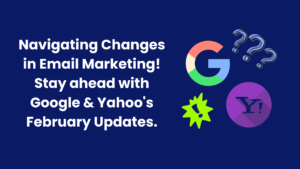Hey folks! We are back with an informative blog, guide, or tip. It all depends on how well you implement it 😀 Presently, there are 2.85 billion Facebook, 2.29 billion YouTube, and 1.38 billion Instagram users – an astounding number of potential audiences. Therefore, leveraging social media becomes an exceptional means to promote your startup effectively.
Now the real question is, how to get started. Initiating your social media journey can be overwhelming but with the saturation on Facebook, the complexity of Reddit, and the predominantly B2B discussions on LinkedIn, it becomes exhausting to find a distinctive presence unless you have a well-defined strategy in place. The following tips will guide you in doing just that.
Set Realistic Social Media Marketing Goals:
- Align social media goals with your overall business objectives to ensure a cohesive strategy.
- Break down long-term goals into smaller, achievable milestones for steady progress.
- Regularly assess and adjust your goals based on changing market conditions and customer preferences. Here are examples of realistic goals you should set before stepping into strategy:
B2B Social Media Marketing Goals:
- Lead Generation: Generate a specific number of qualified B2B leads through social media campaigns.
- Network Growth: Increase the number of followers and connections on relevant B2B platforms, such as LinkedIn, by a certain percentage over a designated time frame.
B2C Social Media Marketing Goals:
- Boost Brand Awareness: Enhance visibility and engagement across social platforms among the target audience.
- Drive Website Traffic: Increase website visits from social media by a certain percentage.
Remember, these goals will differ for each startup, depending on factors like the industry they operate in, their target audience, and the overall marketing strategy.
The Three Pillars of Brand Identity:
Once you define your goal, the next crucial step is building your brand identity and effectively communicating with your target audience. What is Brand identity? it’s something that goes beyond visuals like fonts and colors? Yes! let me tell you how exploring the 3Ps helps your brand connect with customers on a deeper level for better resonance and engagement. This attracts them to connect with your vision, products, and services.
Purpose: Your brand’s goal is the “why” behind your business, building trust and belief with customers.
Promise: The promise goes beyond products, offering unique experiences or commitments.
Personality: Personality defines your tone, aesthetics, and distinct qualities, setting you apart and attracting your target audience for brand recognition and trust.
My goal is to help you understand these three P’s better by discussing the success of a famous startup business that was able to leverage these three P’s to become a success.
Rapido is an Indian startup in the transportation and logistics sector, offering bike-taxi and bike courier services. They excel using the 3P technique:
Promise: Rapido promises convenient, efficient, and affordable transportation solutions, particularly for navigating through traffic-congested areas.
Purpose: They aim to provide last-mile connectivity while also creating employment opportunities for bike owners (“Captain” partners).
Personality: Rapido’s branding is youthful, friendly, and approachable, making it popular with the younger generation seeking quick and budget-friendly transportation options.
With these elements, Rapido was able to attract customers and build a strong brand for cheap travel anywhere at any time.
Now that you have defined the 3 P’s for your startup business, you are all set to connect with your audience through your brand.
Define Your Target Social Media Audience:
- Conduct surveys and analyze customer data to gain deeper insights into your target audience’s preferences and behaviors.
- Create buyer personas to represent different segments of your audience, tailoring content to each group’s interests.
- Use social media analytics to monitor audience engagement and adjust your targeting approach accordingly.
- Experiment with various content formats on your chosen channels to discover what resonates best with your audience.
- Leverage social media management tools to efficiently handle multiple platforms and maintain consistency.
Investigate How Your Competitors Use Social Media:
- Analyze competitor presence on different platforms to identify gaps and opportunities for your brand.
- Identify your competitors’ most successful content types and incorporate similar elements into your strategy.
- Differentiate your brand by focusing on unique selling points and emphasizing your brand’s values and mission.
- Continuously analyze competitor strategies to stay ahead in the dynamic social media landscape.
Based on the analysis, adjust the goals for improving your startup’s social media marketing strategy. Focus on bridging the gaps and capitalizing on your strengths.
| “The main objective of a well-planned social media strategy is to build a positive feeling about your brand among potential customers” |
Choose The Right Platform For Your Business
Choosing the right social media platform for your business depends on whether you are operating in a B2B (Business-to-Business) or B2C (Business-to-Consumer) market. Here are the key points to consider for each:
B2B Businesses:
- LinkedIn Networking and lead generation platform.
- Twitter: Real-time conversations and thought leadership.
- YouTube: Product demos and tutorials.
- SlideShare: Informative presentations and whitepapers.
Choosing the right platform for B2B, Salesforce is a very good example that excels in social campaigns, making them a top company to follow on Twitter in the B2B world.
- Facebook: Wide reach and brand engagement.
- Instagram: Visual appeal and lifestyle products.
- YouTube: Engaging video content.
- Pinterest: Visual inspiration and website traffic.
- TikTok: Viral brand awareness for a younger audience
Here is the best example of how Nykaa embraced influencer marketing, teaming up with beauty and lifestyle influencers to extend their brand’s reach. Leveraging the influencers’ dedicated fan bases, Nykaa successfully promoted products and generated buzz around their offerings.
Remember, selecting the right social media platform(s) is not just about popularity but aligning with your target audience’s preferences and behavior.
Produce Educational Content:
| “90% trust peers on social networks (even strangers); only 15–18% trust brands.” |
- Create educational content catering to your audience’s needs and interests.
- Use captivating visuals for impactful social media posts.
- Provide practical tips and valuable insights to add value.
- Use storytelling techniques to present educational content in a compelling and memorable way.
- Monitor comments and feedback on educational content to understand your audience’s interests better.
- Conduct webinars or live sessions to provide real-time value to your audience and encourage participation.
Types of Content Strategy (posts) for your business
Ensure to incorporate these important social media posts into your business’s strategy to establish a strong bond with your audience, foster a loyal following, and fuel business growth.
B2B Businesses:
- Thought Leadership Content: Share industry insights to establish expertise and credibility in the B2B sector.
- Case Studies & Success Stories: Showcase how your offerings have benefited other businesses with tangible results.
- Webinars & Educational Events: Promote valuable webinars or workshops addressing B2B challenges and solutions.
- Behind-the-Scenes with Team: Humanize your brand by introducing the team behind your startup’s success.
- Networking Opportunities: Announce industry events and conferences to foster B2B connections and partnerships.
B2C Businesses:
- Product Showcases: Highlight visually appealing posts or videos featuring your products in action.
- Customer Testimonials & Reviews: Share positive feedback to build trust and influence potential buyers.
- Lifestyle Content: Create relatable posts that resonate with your target audience’s interests and lifestyle.
- Limited-Time Offers & Promotions: Announce time-sensitive deals to create urgency and drive sales.
- Interactive Content: Engage your audience with interactive polls, quizzes, and challenges for increased brand awareness.
Here is one of my all-time favorite examples of a D2C Creative Advertisement of Durex! The content is very minimal but the story is very much relatable to the relevant target audience which is the success of creative content strategy. So having the best content plan improves your startup’s overall social media strategy.
Develop an Engagement Schedule:
- Use social media analytics to identify peak engagement times for your audience and schedule posts accordingly.
- Encourage two-way communication with your followers by responding promptly to comments and messages.
- Monitor industry trends and timely events to create relevant and timely content that sparks conversations.
Extra Tips 🎉
Don’t lose hope: Be patient and persistent, as social media engagement takes time to build.
Consistency matters: Regularly post relevant and valuable content to engage your audience.
Be social: Interact with your followers, respond to comments, and participate in conversations to foster a sense of community.
Authenticity is key: Develop a genuine brand voice that aligns with your values and resonates with your audience.
Following these tips can enhance your startup’s social media presence and increase engagement over time.
Social Bookmarking Benefits for SMM
Social bookmarking can significantly benefit startups by increasing online visibility, driving website traffic, and improving search engine rankings through quality backlinks. It offers opportunities for networking, market research, and trend analysis while fostering knowledge sharing and content curation. Here are some of the popular social bookmarking tools to gain support for your Social Media Marketing:
- Digg
- StumbleUpon/Mix
This cost-effective marketing strategy allows startups to connect with their target audience, build relationships, and establish credibility as thought leaders. For detailed strategy planning check out How does social bookmarking support and benefit social media marketing (SMM).
Consider paid promotion to boost your audience:
Paid promotions on social media platforms enable hyper-targeted audience reach through advanced targeting options. Advertisers can use demographics, interests, behaviors, and custom data to reach specific audience segments. Retargeting and A/B testing further optimize campaigns for better results. Startup businesses like yours can make use of this opportunity to reach a hyper-targeted audience by leveraging the vast amount of user data collected by these platforms. Here’s how Ads managers work on this data to create highly specific audience segments that match their ideal customer profiles.
- Social media platforms offer advanced targeting options: demographics, interests, behaviors, job titles, etc., for specific audience segments.
- Custom audiences use customer data (email lists, phone numbers) to engage existing and potential customers.
- Lookalike audiences expand reach to new potential customers with similar characteristics to existing customers.
- Behavioral targeting targets users based on interactions with similar content or specific actions.
- Retargeting shows ads to users who visited the website or interacted with social media content, encouraging further actions.
- A/B testing optimizes campaigns by testing different ad variations for better results.
It is now time to dive into which types of ads or paid promotion are most effective for Startup businesses
Google Vs Facebook
Google Ads: Google Ads (formerly Google AdWords) are targeted pay-per-click (PPC) ads, so you only pay when someone clicks on your ad. These ads attract a high purchase intent audience by matching advertisers to relevant keywords searched by potential customers. Users clicking on Google search ads often have a strong intention to learn more or make a purchase, leading to a high “purchase intent” scenario.
Facebook ads: Facebook Ads are targeted social ads across Meta properties like Facebook and Instagram, featuring images, carousels, and videos in main feeds, Stories, or Reels. It excels at brand building with visually appealing and creative ads, leveraging multimedia posts and mobile optimization to meet customers on social media and leave a memorable impact.
Fbads or Gads which is better for you?
Choosing between Facebook Ads and Google Ads depends on your audience, industry, and business goals. Google Ads are better for making sales, while Facebook Ads are ideal for building brand awareness and connecting with customers. For intended products, prioritize sales with Google Ads. For trendy fashion brands, focus on strengthening the brand and connecting with the audience through Facebook Ads to build a loyal customer base over time.
By implementing these strategies, your social media presence will become more effective and aligned with your business goals in 2023.
Why do startups need Social Media Strategy?
When it comes to online businesses, there are three major challenges for a startup business: reaching the target audience, measuring the return on investment (ROI), and achieving business objectives. However, by crafting a solid social media strategy, these challenges can be effectively addressed, leading to improved outcomes.
Here are the reasons why your Startup needs a social media strategy:
Establishing Clear Business Expectations and Goals: A social media strategy allows you to outline precise objectives for your marketing efforts. Whether it’s increasing brand awareness, generating excitement around a new product or event, or launching a campaign, having a blueprint enables your entire business team to work towards common goals.
Tracking Goal Performance: Setting goals is just the first step; follow-through is crucial for success. A well-designed social media strategy includes key performance indicators (KPIs) that allow you to monitor and analyze your business’s progress toward achieving its objectives.
Creating and Tweaking Business Benchmarks: Over time, your business’s performance needs to be assessed and compared against industry standards, competitors, and past results. By consistently evaluating your progress, you can determine the effectiveness of your social media strategy and identify areas that require improvement.
End Thoughts
| “A satisfied customer is the best business strategy of all.” — Michael LeBoeuf |
Therefore, simply posting on social media without a well-crafted plan won’t suffice. To establish a strong social media presence, a strategic approach is necessary to connect with ideal followers who are likely to convert into loyal customers.
You can leverage our resources and support if you want to elevate your brand awareness. Feel free to reach out to us!









